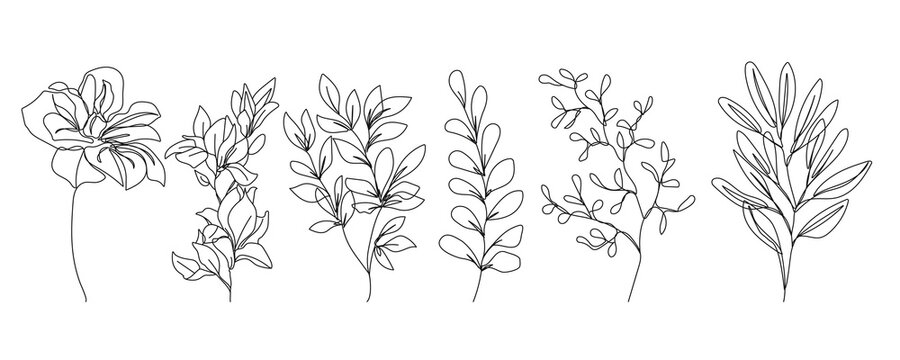By Isabelle Duval
A brief telling of Black Disable History

Blackness and disabled-ness have a complicated, intertwined relationship as both concepts represent the antithesis of the norm; the norm is able-bodied whiteness. In a way, disable-ness is synonymous/interchangeable with Blackness since anti-Black rhetoric inherently disables the Black body. During the antebellum era, enslaved and free Black folk lived through negative stereotypes of their race about their intelligence and mental capacity. Pro-slavers/white supremacists argued that Black people were intrinsically disabled and, therefore, well suited for slave labor because they lacked the mental intelligence/ability to care for themselves and to perform any higher forms of labor (producing something less tangible i.e. teaching students). As much as Blackness and disabled-ness intertwined during the antebellum era, Black people still experienced exclusion from the disabled identity; this stems from slave owners and how they would categorize enslaved folk with disabilities. Instead of evaluating Black enslaved folk under the standards of health and medicine, pro-slavers/white supremacists put enslaved people on a binary scale of “sound” and “soundness”. They did this to protect their revenue and property since a slave with disabilities can be deemed “sound” and sent to work. The binary system and exclusion from dominant medical society created the divide between Blackness and disabled-ness. Since attitudes surrounding the two identities blocked Black people from inhabiting disabled spaces, Black people with disabilities received worse living conditions compared to their disabled white counterparts. Postbellum medicine and care towards Black people with disabilities perpetuated the same attitudes surrounding disable-ness and Blackness.
Eugenics in the United States
When eugenics started in the United States in the early 1900s to eliminate “undesirable” traits within the general population through forced sterilization, the practice focused on people with disabilities and disproportionately targeted Black women. It denotes a change in the perspective of Black women’s bodies. The government shifts from using Black women’s bodies to repopulate slave labor to forcibly sterilizing them because they no longer create people who are “valuable” to the nation. The government put itself as an authoritative/dependable figure in the lives of Black and disabled folk under the stereotype that both groups are incapable of taking care of themselves. It is an untrue stereotype of Black people and disabilities that stemmed from slavery and misconceptions of mental/physical disorders. The stereotype was powerful enough to get the US government to intervene in the reproductive health of a Black/disabled individual. It is also coming from a time where women and folks with disabilities did not have the same rights as their able-bodied cis white male counterparts. To get the Black and disabled burden/dependency off the state, the government used eugenics to stop Black women and people with disabilities from creating more people who might become dependent. Eugenics and sterilization happened because of the idea that disabled bodies are invaluable. The practice mainly targeted Black women because of the anti-Black rhetoric that inherently disabled the Black body. The government has a responsibility of taking care of its citizens, yet it perpetuated the idea that people with disabilities are burdens to the state.
Research Outcome
The goal of this research project is to look at Antebellum era to Civil Rights era texts to locate cases of Black people with autism because, as mentioned earlier, there is a divide between Blackness and autism. Black folk do not have the privilege of having all their identities recognized because of stereotypes surrounding Blackness and disable-ness.

Useful Search Terms/key words:
- feeblemindedness and black
- eugenics and race
- mental hygiene
- (un)soundness
- fits
- convulsions
- sterilization
- mental defectives
- reproduction
- reproduction policy
- mentally dsabled
- psychiatric hospital

Sample Search:
- Bailey, Moya, and Izetta Autumn Mobley. “Work in the Intersections: A Black Feminist Disability Framework.” Gender & Society, vol. 33, no. 1, SAGE Publications Inc, Feb. 2019, pp. 19–40. SAGE Journals, doi:10.1177/0891243218801523.
- Gartner, Danielle R., et al. “Implementation of Eugenic Sterilization in North Carolina: Geographic Proximity to Raleigh and Its Association with Female Sterilization During the Mid-20th Century.” Southeastern Geographer, vol. 60, no. 3, The University of North Carolina Press, 2020, pp. 254–74. Project MUSE, doi:10.1353/sgo.2020.0020
- GONAVER, WENDY. “Not a Human Being:: Reconstruction and Racism.” The Peculiar Institution and the Making of Modern Psychiatry, 1840–1880, University of North Carolina Press, 2018, pp. 173–93. JSTOR, https://www.jstor.org/stable/10.5149/9781469648460_gonaver.10.
- GONAVER, WENDY. “Now She Is Choked:: Gender and the Normalization of Violence.” The Peculiar Institution and the Making of Modern Psychiatry, 1840–1880, University of North Carolina Press, 2018, pp. 112–44. JSTOR, https://www.jstor.org/stable/10.5149/9781469648460_gonaver.8.
- McNairy, C. Banks (Charles Banks). The Undesirable : Read before the Seaboard Medical Society of Virginia and North Carolina, Dec. 9, 1914, Goldsboro, N.C. [North Carolina : s.n.], 1914. Internet Archive, http://archive.org/details/undesirablereadb00mcna.
- N.C. Eugenics Survivors Seek Justice – INDY Week. 24 Mar. 2010, https://indyweek.com/news/n.c.-eugenics-survivors-seek-justice/.
- North Carolina. Eugenics Board. Biennial Report of the Eugenics Board of North Carolina [Serial]. [Raleigh] : N.C. Eugenics Board, 1946. Internet Archive, http://archive.org/details/biennialreporteug07nort.
- Roberts, Dorothy E. Killing the Black Body: Race, Reproduction, and the Meaning of Liberty. 1st ed., Pantheon Books, 1997.
- Sterilization — the North Carolina Program – Selections from Print Collections – North Carolina Digital Collections. 1954, https://digital.ncdcr.gov/digital/collection/p249901coll37/id/15158/rec/1.
- “Unwanted Sterilization and Eugenics Programs in the United States.” Independent Lens, https://www.pbs.org/independentlens/blog/unwanted-sterilization-and-eugenics-programs-in-the-united-states/. Accessed 30 June 2021.

Useful Databases
Here are some databases and links for further searching.
National Institutes of Health from National Library of Medicine Books
Directory of Open Access Journals
Directory of Open Access Books
National Archives info: https://www.archives.gov/research/guide-fed-records/groups/511.html

ALT media platforms
instagram:
- Tiffany Hammond is an autistic mother of two autistic boys, an advocate, and an author.
(ig post)https://www.instagram.com/p/CBdYTNrB3Hg/?utm_source=ig_web_copy_link
(Ig page) https://www.instagram.com/fidgets.and.fries/
2. Ayanna aka Phenomenally Autistic is an autistic mother, advocate, and illustrator.
ig post: https://www.instagram.com/p/CRT4qQnsrMg/?utm_source=ig_web_button_share_sheet
ig page: phenomenallyautistic
YouTube:
3. Tasselfairy. I’m Autistic, Black and Magical. YouTube, https://www.youtube.com/watch?v=zk9BBL3n_hI&ab_channel=Tasselfairy. Accessed 1 July 2021.
- Dr. Aaron Norton. Psychiatric Hospitals & Asylums in 1950s America 1953, 720p. YouTube, https://www.youtube.com/watch?v=1gOjjZ6PltI&ab_channel=Dr.AaronNorton. Accessed 30 June 2021.
Twitter:
- Maria Davis-Pierre is the mother of a child with autism. She is a licensed therapist and offers therapy services for Black families as well as training services to break the stigma surrounding Autism in Black communities. “Autism in Black (@AutisminBlack) / Twitter.” Twitter, https://twitter.com/AutisminBlack. Accessed 7 July 2021.
- “Autism in Black.” Autism Spectrum and Couples Coaching, https://www.autisminblack.org/. Accessed 7 July 2021.
- The Fund for Community Reparations for Autistic People of Color’s Interdependence, Survival, & Empowerment: community power, redistributive justice, mutual aid. “The Autistic People of Color Fund (@AutisticPOC) / Twitter.” Twitter, https://twitter.com/AutisticPOC. Accessed 7 July 2021.
- Autism and Race – All the Weight of Our Dreams – On Living Racialized Autism. https://autismandrace.com/. Accessed 7 July 2021.

Historypin:
Since slavery, African-Americans have been historically denied from hospitals and asylums that cared for and treated the mentally/physically disabled until the end of the Civil War. Throughout the antebellum era, slave owners could send their slaves to institutions under the stipulation that they pay for the slaves’ care rather than getting public funding and support. At the end of the war, African-Americans gained public support/funding and rights to admission for the hospitals; however, they faced poor living and health conditions. Below is a Historypin of a few hospitals that served African-Americans during enslavement to the post-reconstruction era. The pin gives a brief overview of the types of patients admitted and the care they received.

Secondary Sources
Barclay, Jenifer L.. The Mark of Slavery: Disability, Race, and Gender in Antebellum America. United States, University of Illinois Press, 2021.
Visperas, Cristina. “The Able-Bodied Slave.” Journal of Literary & Cultural Disability Studies, vol. 13 no. 1, 2019, p. 93-110. Project MUSEmuse.jhu.edu/article/716938.
Pickens, Therí A.. Black Madness: : Mad Blackness. United States, Duke University Press, 2019.
Stern, Alexandra Minna. Eugenic Nation: Faults and Frontiers of Better Breeding in Modern America. Germany, University of California Press, 2015.

